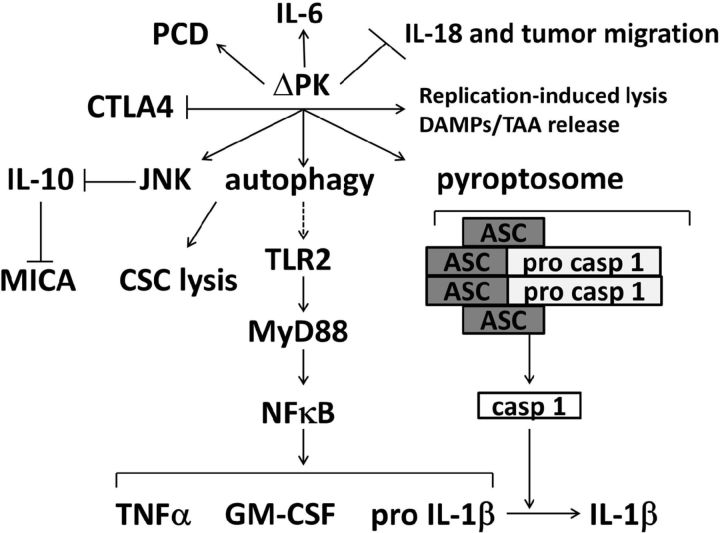Figure 5.
Schematic representation of the ΔPK multimodal activity in melanoma. ΔPK lyses the tumor cells through virus replication, and this results in the release of DAMPs and TAAs that trigger ICD. It also induces multiple PCD pathways and autophagy-related CSC lysis. In addition, ΔPK alters the tumor microenvironment by inhibiting IL-10 through JNK/c-Jun activation while stimulating the expression of inflammatory cytokines through TLR2 activation and pyroptosis. This is shown for TNF-α, GM-CSF and IL-1β, but ΔPK also stimulates expression/secretion of the proinflammatory cytokine IL-6, through a still unresolved mechanism. IL-10 inhibition upregulates the expression of MICA and thereby presumably stimulates NK and T-cell-mediated cytotoxicity. Simultaneously, ΔPK inhibits the expression of IL-18 and thereby presumably interferes with tumor cell migration. It also inhibits the negative immune checkpoint regulator CTLA-4, further favoring appropriate immunoregulatory anti-tumor activity.

